Posts feature partner companies & may be sponsored. Post contains affiliate links & I will be compensated if you make a purchase after clicking on links. As an Amazon Associate I earn from qualifying purchases.
Last Updated on May 14, 2023 by Diane Hoffmaster
How do you dispose of clothes not good enough for charity? The answer is - it depends. The most eco-friendly option for disposing of clothes that cannot be donated is to recycle them into new materials or products.
You could upcycle old clothes into something new and creative. This might include turning an old t-shirt into a trendy bag or cutting jeans into shorts. There are plenty of tutorials online to help bring your ideas to life.
Finally, if you’re unable to donate or upcycle old clothes, then the last resort should always be recycling them at an appropriate textile recycling facility. By doing this, you can ensure that the materials don’t end up in landfills and can be reused in other products.
Some companies offer textile recycling services, where old clothes are converted into insulation, carpets, and other useful items. If you don’t have access to a textile recycling service, you can always take your clothes to a thrift store or consignment shop. Some of these places already have pathways set up for textile recycling. Talk to the manager and let them know that you are wondering what to do with old clothes that cannot be donated. They may have suggestions for you.
There are plenty of options available to get rid of old clothes responsibly and sustainably. I will share a few more ideas here, along with ways to minimize your overall clothing impact on the planet.
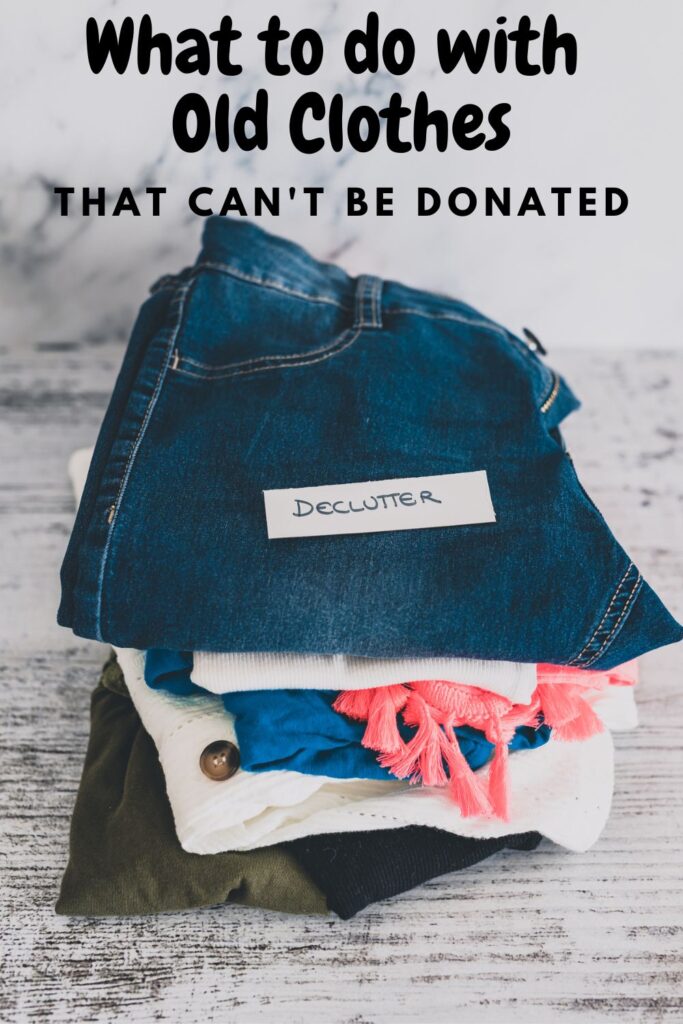
Table of Contents
Can you throw clothes away in the garbage or recycle bin?
No! Clothes are not biodegradable, so they should not be disposed of in landfills. However, if you can’t donate them or upcycle them into something else, then the last resort should always be recycling them at an appropriate textile recycling facility.
That means you can't just toss them in the recycling bin at your curb. Call your local trash company and ask for more information about local options for recycling clothing.
Can you compost old clothing?
This one is a little tricky. In theory, natural fibers will break down in a compost bin but it will take a while. Materials like cotton, silk, hemp, linen, and wool will biodegrade over the course of many months or years but you will have to be pretty patient.
Finding a place to recycle clothes or using them for cleaning rags is a quicker and easier use for worn-out clothes. Synthetic fibers will not compost at all so do not put them in your compost bin.
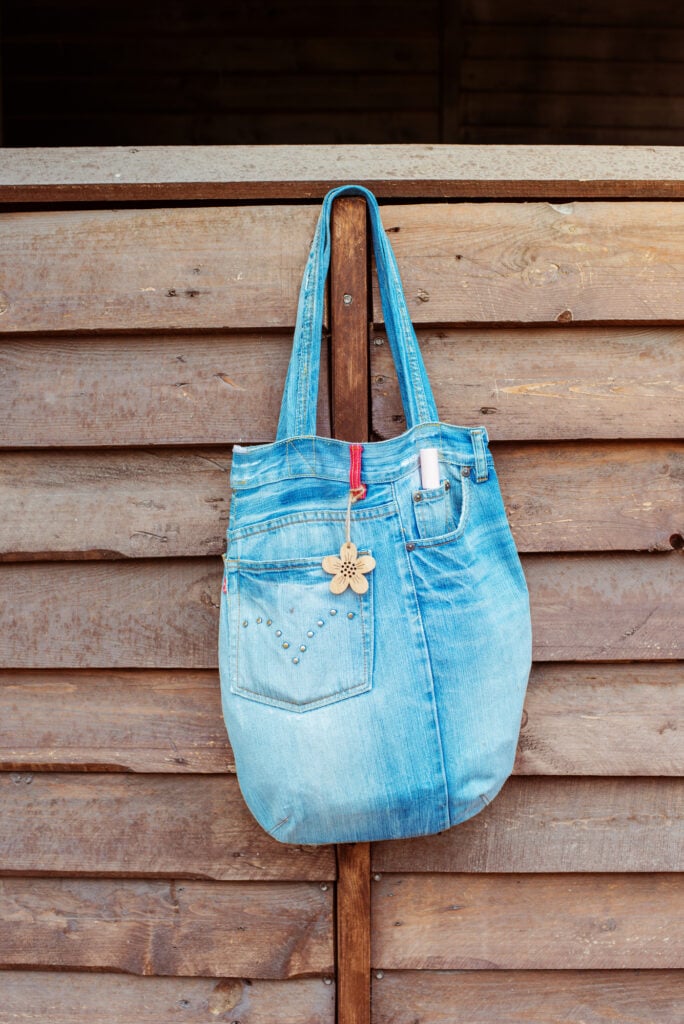
17 Genius Things You Can Do With Old Clothes That You Can't Donate
Old clothes that can't be worn anymore aren't useless! From turning old t-shirts into blankets to using old socks to dust your home, here are a few ways to give new life to old clothes.
Upcycle them into new clothing items or accessories
Get creative with upcycling projects such as turning a t-shirt into a tote bag, old sweaters into hats, or using fabric scraps to create a patchwork quilt. There are so many ways to give your worn-out clothing a second life, which keeps them out of the landfill.
Use them as cleaning rags
Wipe up spills around the house with old underwear because charity shops will definitely not accept that! And does it really matter if you scrub your baseboards with used clothing as cleaning cloths? Who is going to know?
Cut them into strips to use as ties for plants in the garden.
Have a tomato plant that needs some support? Make old pillowcases or t-shirts into garden ties and maintain order in your garden plot. Cut clothing into strips with a sharp pair of fabric scissors and put them in a bag by your garden supplies so you always have a few handy when you need them.
Use them as packing material when mailing fragile items.
When the holidays roll around, package your gifts with green materials instead of styrofoam packing peanuts. Old textiles like socks or old kitchen towels can also be used to wrap delicate Christmas bulbs before packing them in storage after they come off the tree. (check out my post on Christmas storage solutions for more organizing tips)
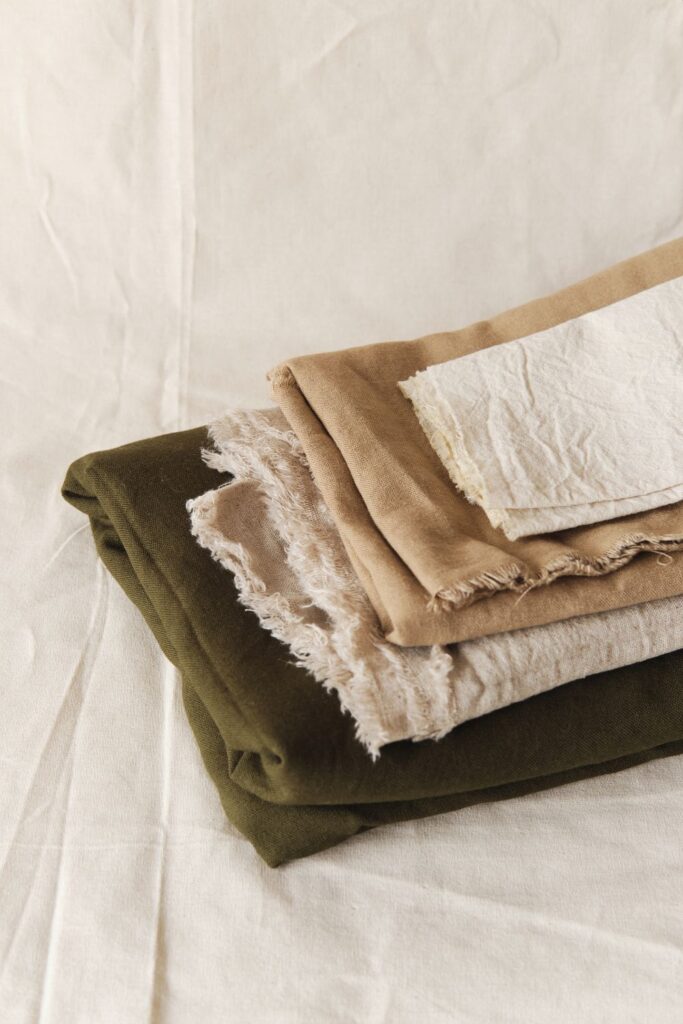
Cut them into squares to use as reusable napkins or dish towels.
This one might take a bit of creativity on your part. If your clothing is blended with synthetic fibers it might not be absorbent enough for this. Natural fibers like cotton, however, might work.
Use them as padding or insulation for items while moving.
If you have someone that is moving, they may appreciate your hand-me-downs to help keep their breakables from breaking in transit. Delicate household items are much sturdier when wrapped in an old shirt.
Use them as fabric to cover or reupholster furniture.
Are you a DIY sort of person? Work towards your carbon-neutral dream and upcycle some unwanted items into a new piece of furniture.
Find Textile Recycling Companies that specialize in repurposing textiles.
Textile recycling companies such as Bay Area Recycling for Charities (BARC) or Goodwill Industries accept unwanted items and sell them to local thrift stores. The proceeds are used to fund charity programs.
Retold Recycling will provide you with a box or bag that will store your old clothes and a pre-paid label for shipping. No need to find recycling bins when they make donating clothing so darn easy!
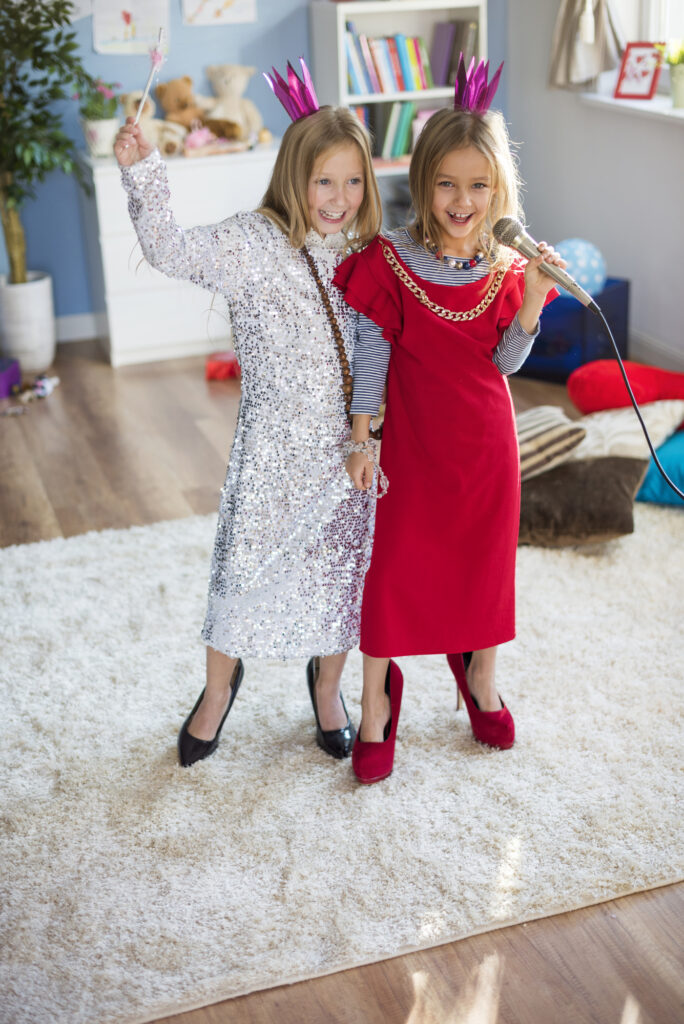
Use them as costumes for kids' dress-up play
Kids love to dress up so let them get creative with your worn-out clothes. Ask at your local school or community theater production if they take unwanted clothes for their performances.
Turn Into An Arts + Crafts Project
If you are the crafty sort, consider making a rag rug or a wall hanging from your old clothing. If you aren't that crafty yourself, ask your local buy-nothing group if anyone wants old clothing for crafts.
Dye the fabric and turn it into something usable
A package of fabric dye might make a huge difference in your old clothing. A new, vibrant color and some elastic or ribbon and you could make a hair accessory or headband.
Use the textiles as pillow stuffing
While you may not be able to make something soft enough to sleep on, consider turning old clothing into a throw pillow. Use old jeans for the cover and stuff it with a few old shirts or other unwanted clothing. Throw pillows are a great way to liven up your living room.
Wear old stained or damaged clothing for dirty projects
Don't tackle those painting projects or other dirty tasks like yardwork in your nice clothes. Keep a few pieces of old clothing around to put on before you garden or mow the lawn. When you are doing your spring cleaning, keep a few of those unwanted items in case you decide to paint the kitchen next month! Old jeans with a hole in them work just fine for getting dirty.
Practice sewing or patch repair
Have an old sweater with a hole on the elbow? Or blue jeans with a rip or two? Buy some patches in cute designs or funky colors and give it a bit of personality!

Donate them to an animal shelter
Although you may not be able to donate your old clothes to a clothing charity, many animal shelters and wildlife centers will take them. Clean, warm blankets and towels are particularly useful for the animals in cold weather months. Soft cotton t-shirts are also quite welcome by the furry friends they take care of. If you don't have a local shelter, you might want to call your vet and see if they would like an old t-shirt or two.
Order a Zero waste box from Terracycle
Zero waste boxes from Terracycle are an easy and convenient way to recycle old clothes you can’t donate. The box will come with a prepaid shipping label, so all you have to do is fill it up with your unwanted garments and drop it off at the nearest UPS store. Your items will be recycled into new products like insulation or stuffing for toys.

Buy from brands that do "take-back" programs
As more and more people become conscious of the environmental impact of fast fashion and the disposal of clothes, many stores have started implementing buy-back programs. These programs allow customers to sell back their gently used clothing for store credit, cash, or discounts on future purchases. Here are a few stores that have successful buy-back programs for clothing:
Patagonia:
Patagonia is known for its commitment to sustainability and the environment, and its Worn Wear program is a testament to that. Customers can bring their used Patagonia clothing to any Patagonia store or mail it in, and they will receive store credit based on the condition of the item. The clothing is then either repaired and resold or repurposed into new products.
Levi's:
Levi's has a program called SecondHand that allows customers to sell back their gently worn denim clothing for a gift card. Donated clothing is then cleaned, repaired, and resold on their website at a reduced price. This program not only reduces waste but also makes quality Levi's products more affordable for those who may not have been able to purchase them at full price.
Eileen Fisher:
Eileen Fisher is a sustainable fashion brand that has a buy-back program called Renew. Customers can bring their gently worn Eileen Fisher clothing to a store or mail it in, and they will receive a gift card for the value of the clothing. The clothing is then either repaired and resold or upcycled into new garments or accessories.
Nike
Nike's Reuse-A-Shoe program repurposes old athletic shoes. Shoes are collected, recycled, and then used to make cushioning material for tracks and in communities around the world. Not only does this reduce waste but it also helps provide safe spaces for people to engage in physical activities.
North Face
The North Face has partnered with the Textile Exchange to launch its Common Threads Initiative. This program was created to reduce textile waste by encouraging customers to recycle their used apparel and footwear, regardless of the brand. Customers can bring their gently worn items into the store for recycling or mail them in for free.
H&M
H&M recently announced a partnership with I:CO, an organization that collects and recycles used clothing. This program allows customers to save money on their next purchase when they recycle their old clothes at any H&M store. They also turn some of these recycled materials into insulation for jackets and shoes.
These stores are great examples of companies that are actively working to reduce waste and promote sustainability in the fashion industry. By implementing buy-back programs, they not only reduce the amount of clothing that ends up in landfills but also encourage customers to make more conscious purchases and extend the life of their clothing.
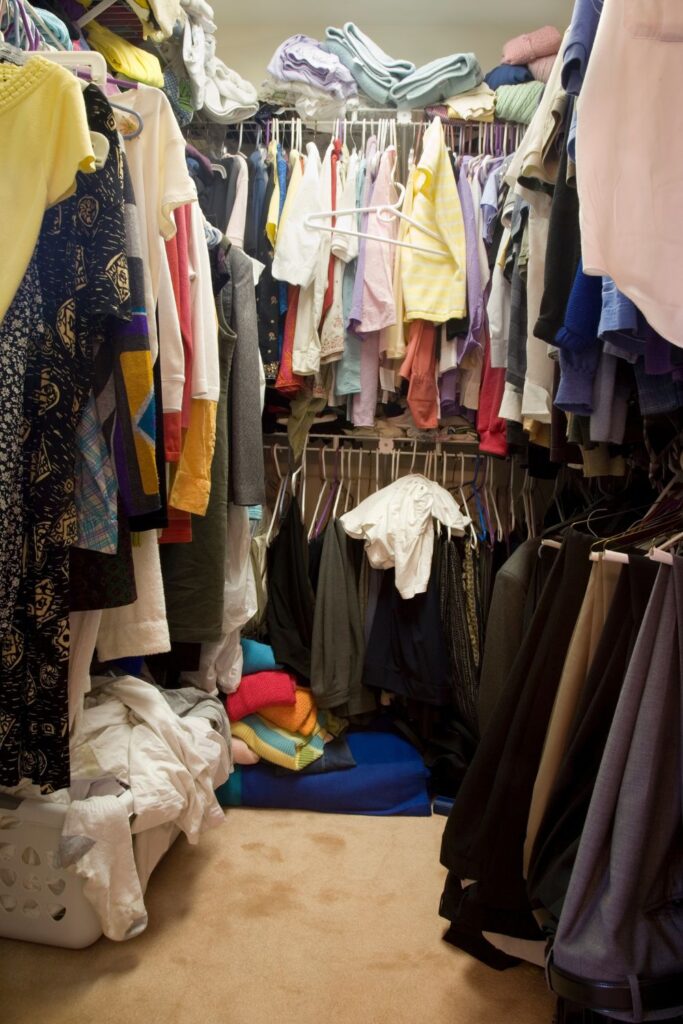
Rethink Your Clothing Habit
Fast fashion has been a growing trend in recent years, with companies producing cheap, trendy clothing at a breakneck pace. While this may seem like a great way to stay stylish without breaking the bank, the truth is that fast fashion has a devastating impact on the environment and the people who make the clothes.
Our country has a distinct LACK of recycling solutions for our overabundance of old clothes. But, not enough recycling programs aren't the only reason to stop supporting fast fashion designers. Here are a few reasons why we need to buy fewer clothes and some tips to help you minimize your wardrobe.
Fast fashion is incredibly wasteful.
The fast fashion industry churns out new styles at an alarming rate, and many consumers feel pressure to keep up with the latest trends. This results in a huge amount of clothing waste, with many items being worn only a handful of times before being discarded.
According to the Environmental Protection Agency, the average American throws away about 80 pounds of clothing per year.
Fast fashion is harmful to workers.
Many fast fashion companies outsource their production to countries with lax labor laws and low wages. Workers in these factories are often paid very little and forced to work in unsafe conditions. In some cases, they may even be forced to work long hours without breaks or adequate food or water.
Minimizing your wardrobe can save you money and reduce stress.
By focusing on quality over quantity and investing in timeless pieces that will last for years, you can actually save money in the long run. A smaller wardrobe can also reduce the stress of decision-making, as you'll have fewer options to choose from each day.
So, how can you minimize your wardrobe? Here are a few tips:
- Start by decluttering. Go through your closet and get rid of anything that doesn't fit, is damaged, or that you haven't worn in the last year.
- Invest in quality basics. Look for pieces that are well-made and versatile, such as a classic white button-down or a well-fitting pair of jeans.
- Choose timeless styles over trendy pieces. Trends come and go, but classic styles never go out of fashion.
- Shop secondhand. Thrift shops and consignment shops are great places to find quality clothing at a fraction of the cost. Look for a local Salvation Army or another local charity shop the next time you need an item of clothing. Give someone else's unneeded clothes a second life in your own closet.
- Consider a capsule wardrobe. A capsule wardrobe is a collection of a few key pieces that can be mixed and matched to create a variety of outfits.
If you find yourself wondering what to do with old clothes that can't be donated, you might need to start shopping less. By buying fewer clothes and focusing on quality over quantity, we can reduce the impact of the fashion industry on the environment and support fair labor practices. Plus, a smaller wardrobe can actually make getting dressed in the morning easier and less stressful.
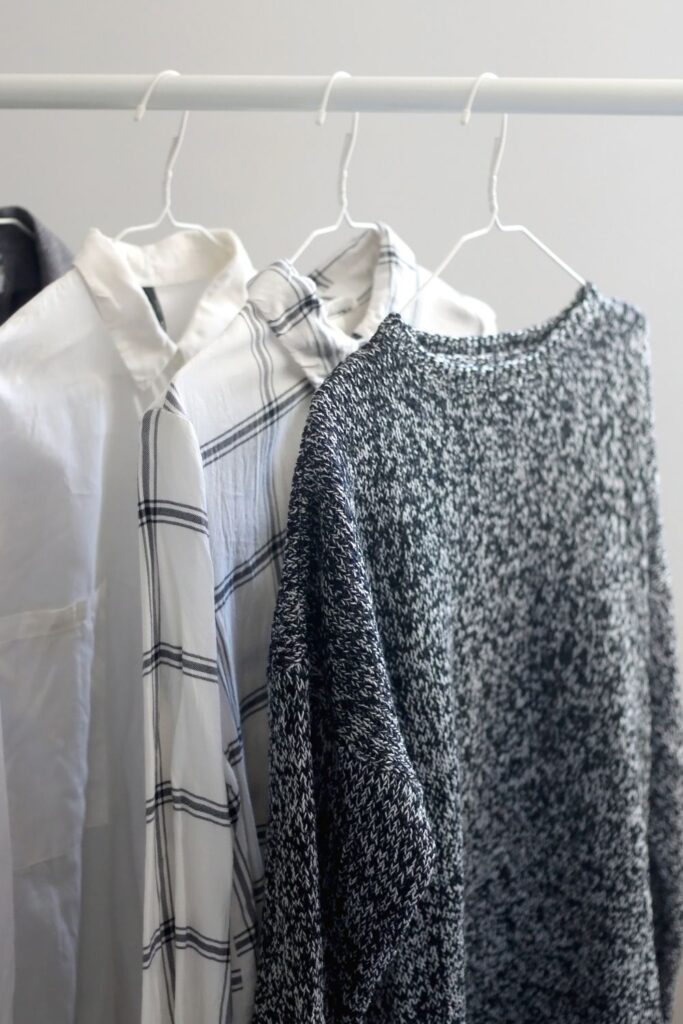
Final Thoughts
Remember, thrift stores are great places to shop and textile waste does not go into landfills. Even if you can't donate clothes due to tears, stains, or other damage, get creative with art projects or call your local animal shelter.
Just because you can no longer wear something doesn't mean that it is useless. And the most important message of all is that the LESS YOU BUY, the LESS YOU THROW AWAY.
If you like this post and are looking for more tips, check out my post about what to do with old shoes. You can also read my garage sale survival tips if you are interested in second-hand shopping and my tips for saving money on clothing for teens.

Diane is a professional blogger and nationally certified pharmacy technician at Good Pill Pharmacy. She has two college aged kids, one husband and more pets than she will admit to. She earned her BS in Microbiology at the University of New Hampshire but left her career in science to become a stay at home mom. Years of playing with LEGO and coloring with crayons had her craving a more grown up purpose to her life and she began blogging and freelance writing full time. You can learn more about her HERE.




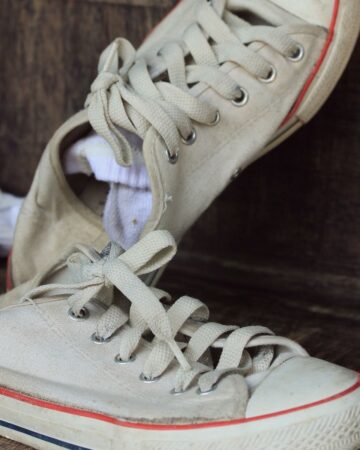
Leave a Reply